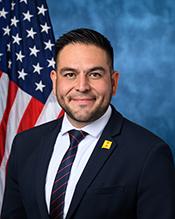0
Reverse Transfer Efficiency Act of 2023
12/15/2023, 3:59 PM
Summary of Bill HR 4179
The bill outlines several key provisions to achieve this goal. First, it requires the Department of Education to establish guidelines for the reverse transfer process, including the criteria for determining which credits are eligible for transfer. This will help ensure that students receive credit for the courses they have completed at the four-year institution.
Additionally, the bill encourages collaboration between four-year and two-year institutions to facilitate the transfer of credits. This includes the development of articulation agreements and the sharing of student data to track progress towards degree completion. Furthermore, the bill provides funding for grants to support institutions in implementing the reverse transfer process. This funding can be used for technology upgrades, staff training, and other resources to improve efficiency and effectiveness. Overall, the Reverse Transfer Efficiency Act of 2023 aims to make it easier for students to earn an associate's degree by recognizing the credits they have already earned at a four-year institution. By streamlining the reverse transfer process and providing support to institutions, the bill seeks to increase the number of students who successfully complete their degree and enter the workforce with valuable credentials.
Congressional Summary of HR 4179
Reverse Transfer Efficiency Act of 2023
This bill allows the release of a transfer student's educational records from an institution of postsecondary education where a student earned credit for coursework to an institution of postsecondary education where the student was previously enrolled in order to apply the student's coursework and credits toward completion of a recognized postsecondary credential, such as an associate's degree.
Specifically, the bill allows the Department of Education to provide funding to an institution of postsecondary education that releases a student's records of postsecondary coursework and credits without the consent of the student or the student's parents if the student provides written consent prior to receiving the credential.



